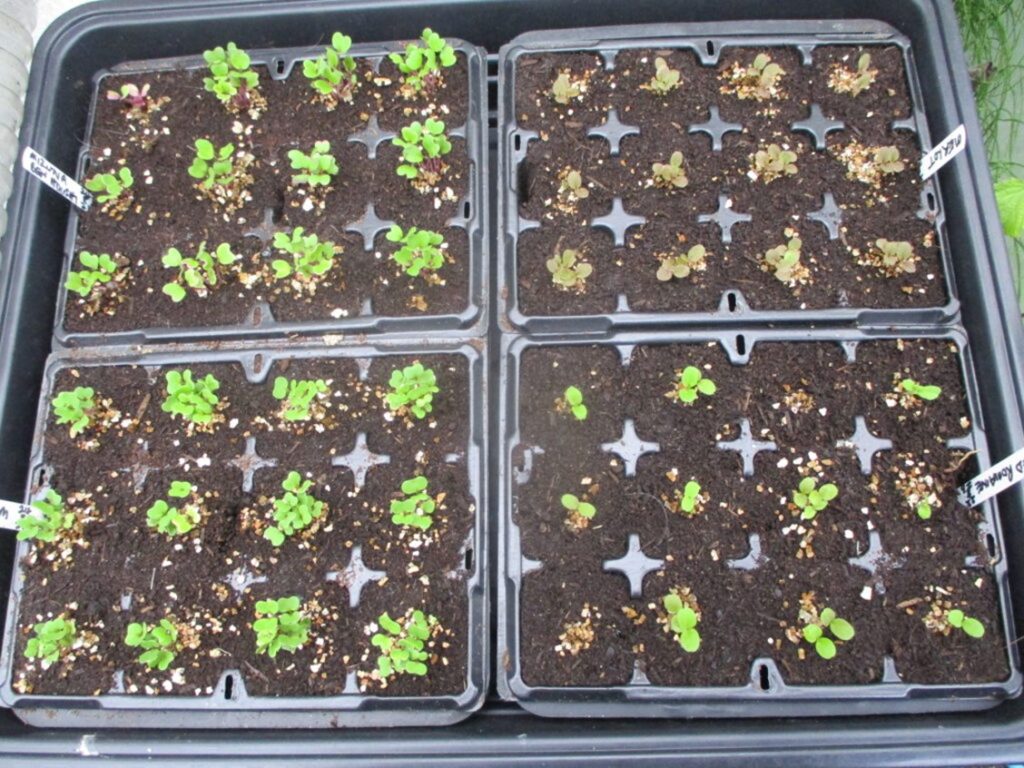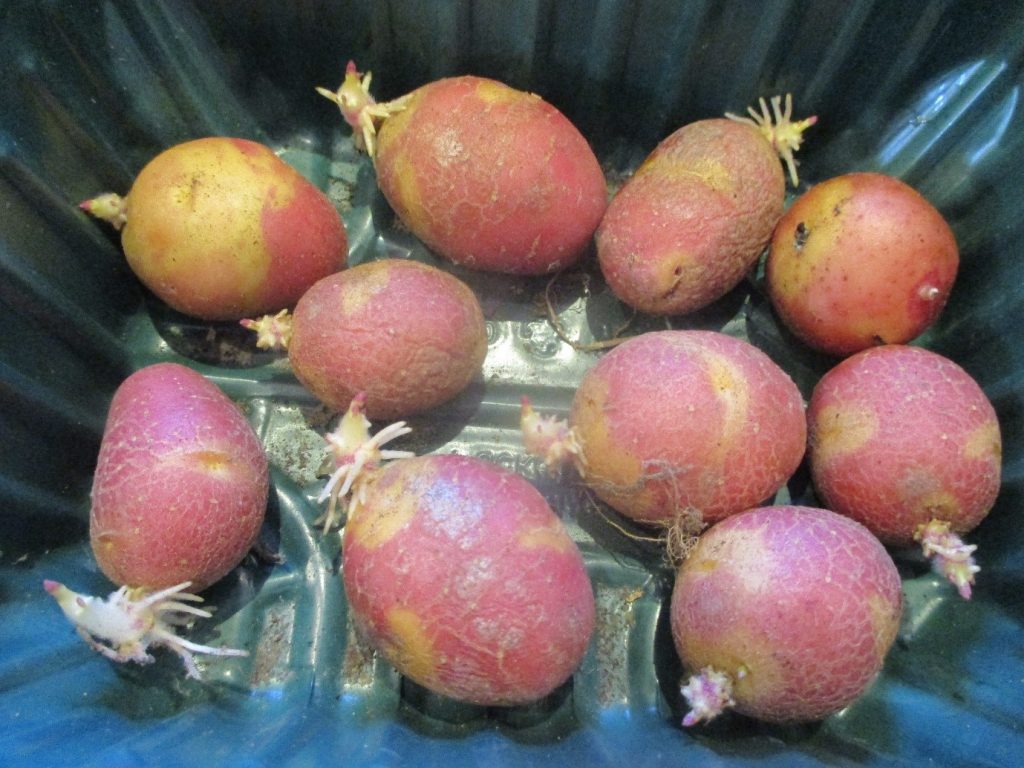Remember this Golden Rule: “Always sow the seeds – you can catch up on everything else later except that!”
With day length shortening and decreasing light available to plants – it is vital that some crops are sown now, or as soon as possible, if you want to be sure of plenty of winter food.
That means do it NOW! Every day, days are getting shorter and growth is slowing. – In the UK and Ireland, we’re once again facing uncertainty of some food supplies like fresh vegetables. Anything you can sow now will give you some vitally important fresh salads and other vegetables, if there is a shortage of fresh winter vegetables! There are still plenty of fast-growing things you can sow now – but the sooner the better!

Sow outdoors in pots or modules – for planting in the tunnel or greenhouse later in September when summer crops have been cleared and space is available – or direct sow in the polytunnel now if it’s not too hot:
Cabbages ‘Greensleeves’, ‘Greyhound’ & other leafy non-hearting spring types, carrots (‘Nantes’ and other early finger types, possibly in long modules for transplanting), kales such as Cavalo Nero, dwarf green curled and Ragged Jack (or Red Russian) for baby leaves, lettuces (non-hearting leafy types such as green & red Lollo, Batavian, Jack Ice and Lattughino, Winter ‘Gem’ & winter butterheads like All Year Round), lamb’s lettuce (corn salad), endives*, rocket, Swiss chards & ‘perpetual leaf beets*, beetroot ‘Bull’s Blood’ & ‘McGregor’s favourite’ (for salad leaves*), peas (for pea shoots – Oregon Sugar Pod is a good variety), Claytonia* (also called miner’s lettuce or winter purslane), American Landcress*, leaf chicories*, rocket, brocoletto ‘Cima di Rapa’. All fast-growing Oriental greens such as Vitamina, Mizuna, pak choi*, Choy Sum, mustards, Komatsuna, Tatsoi etc can be sown now with less risk of bolting now the weather is cooler, and are so productive and useful in polytunnels and greenhouses over winter, and can be grown in large pots if you wish. Also summer turnips*, summer spinach, salad onions*, leafy salad mixes, coriander*, chervil*, plain leaved and curly parsley* and broad leaved sorrel*.

Covering delicate young seedlings while in seed trays outdoors with a fine mesh-covered frame or cloche will give them protection from pests, early autumn strong winds and heavy rain.
Cabbage root fly is still active in early September and can devastate brassica crops. Be extra careful with watering and ventilation of seedlings now, in the damp autumn air, to avoid damping off. Watering from below by sitting modules or trays in a larger tray of water just for a few minutes is best but avoid saturating them. I find using a good, organic peat-free compost is by far the best for autumn sowing in particular – I never experience any fungal diseases, as the plants have far more natural resilience that those grown in chemically fertilised peat composts.
Outdoors, in modules, in a seedbed for transplanting, or in situ where they are to crop, to possibly to cover with cloches or frames later on in autumn you can sow:
Early summer cauliflowers for next year, brocoletto ‘Cima di Rapa’, fast-growing early ‘Nantes’ type carrots for a late autumn crop, cabbages (red ball head, ‘Greyhound’ and leafy non-hearting spring types), leaf chicories*, endives*, salad onions*, Claytonia (winter purslane)*, lamb’s lettuce*, American Landcress*, winter lettuces*, kales*, radishes, Oriental radish such as green skinned, red fleshed Mantanhong, or Pink Dragon (a great variety), rocket, summer spinach*, Swiss chard* and leaf beets*, oriental greens such as Choy Sum, Pak choi*, mibuna, mizuna, mustards ‘Red & Green Frills’, Chinese kale (Kailaan), Komatsuna*, and any of the fast-maturing salad leaf mixes.
*- Best sown in early September
On any empty patches of ground already cleared of crops that won’t be used over winter:
Sow green manures now such as alfalfa, red clover, mustard (a brassica so be careful watch rotations) winter tares, field beans, fenugreek, phacelia and Hungarian grazing rye. These will help to protect and improve soil, mop up nutrients to stop them leaching in heavy rain – resulting in them being lost and polluting groundwater. Green manures or even weeds will ‘lock-up’ carbon, hold onto nutrients and feed worms later, when cut down and covered. Dig them in or cut down and leave on surface later after the first frosts, then cover with something waterproof to protect the soil, prevent nutrient loss and possible pollution. The worms will then work on incorporating the plant material into the soil over the winter – leaving you a perfect, weed free, warmer, more friable and more fertile soil to start your spring sowings next year. Don’t leave manure or mulches uncovered now, otherwise you will cause pollution – whatever some of the devotees of that practice may insist!
Also sow a few hardy annuals, to flower over the winter in polytunnels and greenhouses and early next year outside for bees and other pollinators which either don’t hibernate or emerge in early spring. Bees and other insects are the basis of all life on earth – and they need all the help they can get now!
If you want new potatoes for Christmas or New Year – You could still plant a few sprouted potato tubers in pots before mid-September – to bring into the greenhouse or tunnel later before frosts. ‘Autumn planting ready’ types are available now in garden centres – or if you have any small tubers of 1st or 2nd earlies you’ve kept from your spring crop, or ‘Mayan Gold’ or ‘Apache’ lifted in spring/summer – put them in the fridge for a couple of weeks – then bring into the warm and keep dark for a few days – this will initiate sprouting of shoots – Mayan Gold and Apache are great-tasting potatoes which are not day-length sensitive and will grow quite happily at any season of the year. Lady Christl is also good and always the fastest to bulk up but Sharpe’s Express and Duke of York are also good. The sooner you plant them the better now. Give them good air circulation once they are above the surface – and to avoid late blight don’t wet the leaves when watering as doing this encourages it. Even if they are varieties which may not be ready in time for Christmas, they will be ready to harvest early in the New Year if you protect them from frost – and they will be even more welcome then!

And don’t forget there’s still just time to plant some saffron bulbs for a November crop.
If you do one thing next year – plan to grow at least one non-F1 hybrid, open-pollinated variety of one of your favourite vegetables to save seed from. I guarantee you’ll be so glad you did. and if you haven’t done it before – you will be so thrilled and proud when you grow your first crop from home-saved seed!
Saving our own seed gives us a measure of resilience and independence from the global giant agrichemical/seed companies who are increasingly buying up small independent seed companies with the aim of controlling the global food supply and increasing their profits by selling more of their exclusive patented F1 hybrids. At the same time, they are restricting our choice of varieties by ditching tried and tested old favourites which have stood the test of time and may have traits which are far more useful to home gardeners, like not all being ready to harvest at once! Open-pollinated varieties may also have the genetic resources to be more adaptable to the variability of weather conditions due to climate change
Despite all the years I’ve been gardening – I never cease to be surprised, thrilled and full of wonder at Nature’s miracle of a tiny seed and its determination to grow. That perfect little pre-programmed package of DNA – full of ancient history, priceless, unique and irreplaceable genes, and the spiritual fingerprint of all those gardeners who have grown and saved them for centuries and bequeathed them to us. And best of all – they are packed with the delicious promise of healthy food resilience for the future!